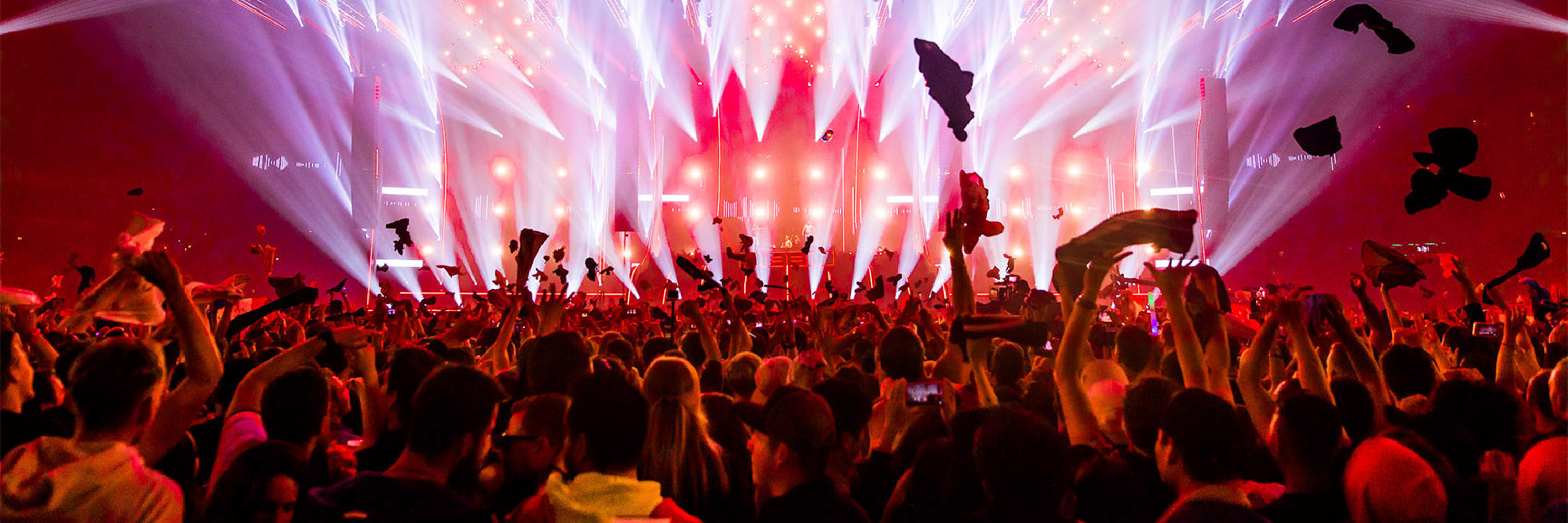hi guys
what is the best way for mapping projection outline, for example, on the border of a box?
like this: http://www.youtube.com/watch?v=Sm3fDroQuaM
thank you!
best way for mapping outline
- Tschoepler
- Posts: 467
- Joined: Fri Mar 13, 2009 04:26
Re: best way for mapping outline
In this example I'd say using VVVV
If you want to do this with Resolume I'd suggest looking at the effects "Keystone Mask" (for the outline effect) and "Keystone" for mapping to the surface.
If you want to do this with Resolume I'd suggest looking at the effects "Keystone Mask" (for the outline effect) and "Keystone" for mapping to the surface.
████▀ ▄█ tschoepler.net █████ zweifarbton.net █▄ ▀████
Re: best way for mapping outline
the oldskool method is to place a camera where the projector will sit, take a photo, then create the footage using the photo as a guide.
Re: best way for mapping outline
For indoor installations we map the objects live on photoshop. Checkout my vimeo page for mapping examples
http://vimeo.com/user3051166/videos
http://vimeo.com/user3051166/videos
Re: best way for mapping outline
I used this solution a while ago:
-Create a image in Photoshop, or whatever other program.
Use enough resolution because you are going to scale and keystone it later on! (The biggest size of your composition should be enough though)
-Select all
-Fill selection with white
-Shrink selection 10-20 (or other value you would like your border to be) pixels, and delete everything in the selection, or fill with black.
-Save image as .png file if you use transparency.
Now you have an image with a white outline.
You also could use transparency as outline and fill with black/white and luma-blend it out later in resolume.
Load this image as a clip, scale it, and add the keystone plugin to the layer containig the clip, or add the keyston plugin to the clip itself.
Map the white outline to the borders of your object!
I used a square image with a square composition in this example because i used this to map on square objects... Every other aspect is possible though.
You can use the same image on 3 layers to map a cube for example.
In this case you only have to adjust the keystone plugin for every clip/layer.
You also can create an image of just a white line... and load this line in several layers and map it to every line you want to map on... In this case you could actually do without keystoning.. but only use the X-Y-Z rotation on clip/layer level
-Create a image in Photoshop, or whatever other program.
Use enough resolution because you are going to scale and keystone it later on! (The biggest size of your composition should be enough though)
-Select all
-Fill selection with white
-Shrink selection 10-20 (or other value you would like your border to be) pixels, and delete everything in the selection, or fill with black.
-Save image as .png file if you use transparency.
Now you have an image with a white outline.
You also could use transparency as outline and fill with black/white and luma-blend it out later in resolume.
Load this image as a clip, scale it, and add the keystone plugin to the layer containig the clip, or add the keyston plugin to the clip itself.
Map the white outline to the borders of your object!
I used a square image with a square composition in this example because i used this to map on square objects... Every other aspect is possible though.
You can use the same image on 3 layers to map a cube for example.
In this case you only have to adjust the keystone plugin for every clip/layer.
You also can create an image of just a white line... and load this line in several layers and map it to every line you want to map on... In this case you could actually do without keystoning.. but only use the X-Y-Z rotation on clip/layer level
desktop: Windows 7 home premium 64 bit, MSI 870A-G54, AMD Phenom II X4 955 Black Edition, 4Gb RAM (GVP34GB1600C9DC), NVidia GTX 560
laptop: Windows 7 home premium 32 bit, Core2duo 2Ghz, 4Gb Ram, NVidia 9600m GT
laptop: Windows 7 home premium 32 bit, Core2duo 2Ghz, 4Gb Ram, NVidia 9600m GT

